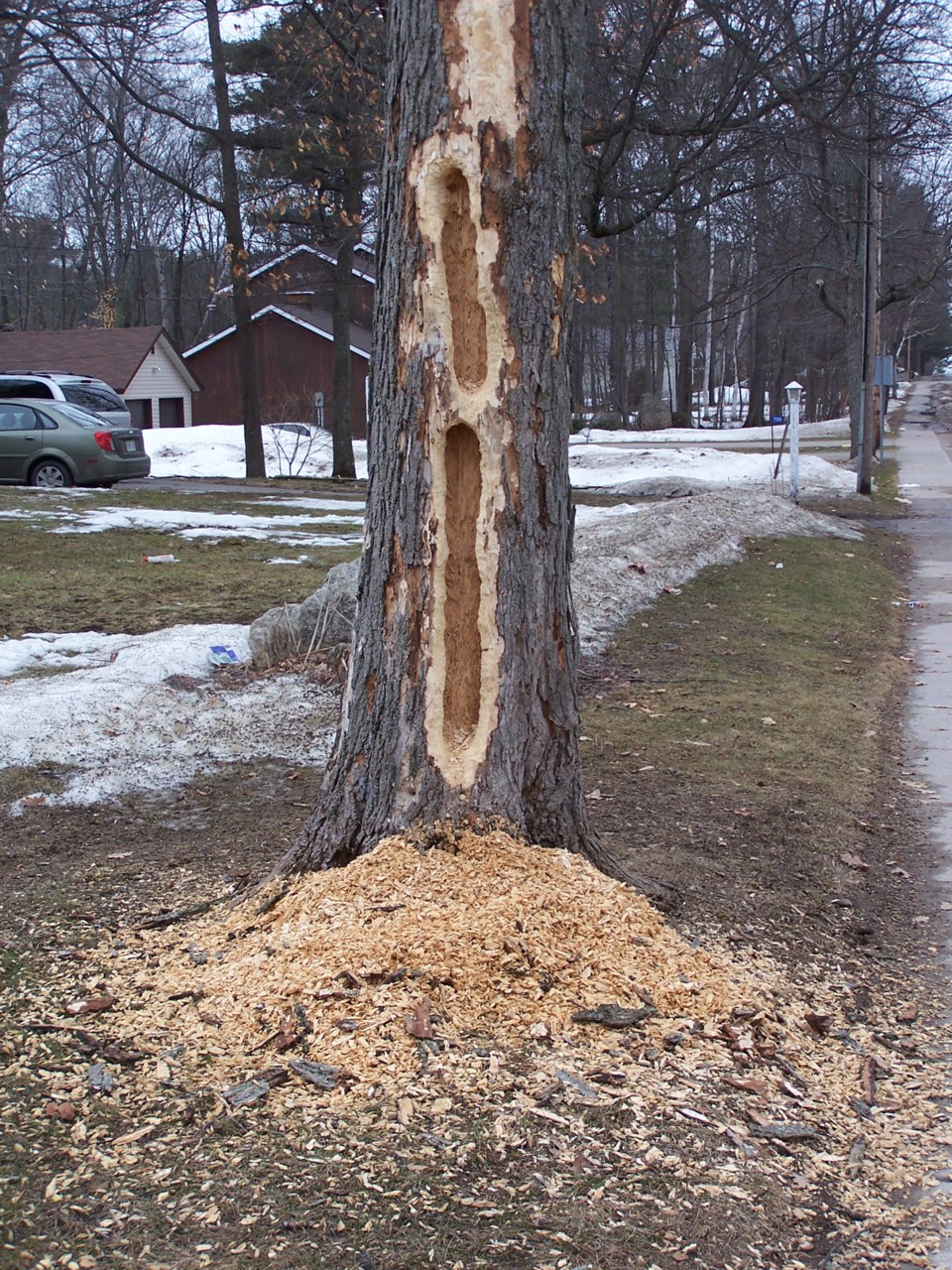You don't see them very often, but when you do it's a moment to remember.
With their bright scarlet top-knot and striking black-and-white plumage, the pileated woodpecker is a bird that looks quite 'dressed-up'.
It is a bit surprising, however, that this crow-sized bird can hide itself as well as it does. Being wary is a characteristic of most bird species, but this one could even be called stealthy.
Peeking out from behind a tree trunk, it will inspect the area carefully before taking flight.
On the other hand, when a pileated has decided that food is to be gleaned from within a tree, the resulting hole and pile of wood chips can hardly be overlooked.
Excavations are commonly as deep as an adult's hand and often a metre in length. Quite a bit of work for a grub or two.
A couple of careers ago, when I worked at the Ministry of Natural Resources, a call or two would come into the office each year that went something like this:
Caller: "There's a huge, gigantic woodpecker eating holes in my tree! Can I shoot it?"
Me: "Well, to me it sounds like your tree is already dying, so shooting it won't do much good."
Caller: "Shooting what won't help? The tree or the woodpecker?"
Me: "The tree."
Caller: "You stupid, over-paid, underworked, paid-for-with-my tax-dollars civil servant! … The woodpecker! Can I shoot the woodpecker?"
Me: "No."
A conversation would then follow as to the actual events taking place in the caller's back yard.
Yes, I would conclude, it was probably a pileated woodpecker ripping holes in the ol' spruce tree.
Yes, they would admit, the ol' spruce tree had shown signs of some brown needles last year. And then we'd discuss biology and ecology and question the need to call in a 'tree surgeon'.
This is generally what happens: new tree growth happens only in the outer rings, just under the bark.
The inner rings are actually dead wood (which it seems we try to make into lumber whenever we can). If bacteria or fungus becomes established in the dead wood, it begins to rot.
As it rots, it becomes attractive to wood-boring insects, which burrow in from the outer bark or enter up through a rotting root system.
Along comes Mr. (or Ms) Woodpecker. It lands on a neighbouring tree and raps the trunk with its beak. Tap- tap. Hmm. Sounds solid. The woodpecker now lands on the big 'ol spruce tree in question, and raps it with its beak. Thunk-thunk. Hmm. Sounds hollow.
"Thunk-thunk" in woodpecker language translates to "the wood is soft, rotting and is probably filled with tasty morsels running around in there."
The bird then has to expend considerable energy ripping and chiseling through the outer bark to get at the carpenter ants or beetle grubs hiding within. It's a lot of work for a nibble or two.
And, no, the woodpeckers don't eat the wood, just the critters found living inside.
But as the 'owner' of the tree, you may well stand there and lament that the woodpecker has killed the tree. Not so.
The tree was already going down, the woodpecker just let you know about it.
Without the woodpecker's tell-tale holes, you might have gone on thinking all was well, until a wind storm toppled the weakened tree into your house. Now you can be proactive and have the tree removed under control.
Pileated woodpeckers won't open up healthy trees. That would be a huge waste of energy with no return for its work. Woodpeckers are smart. No reward? No work.
Smart, handsome, helpful, and efficient. Pretty good resume for a bird. They'd make for a good civil servant.






